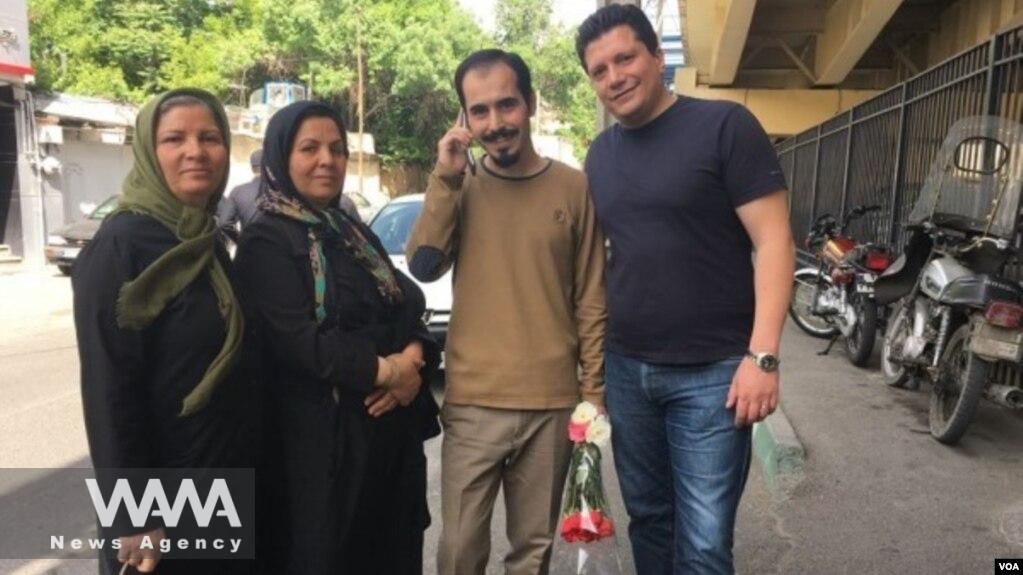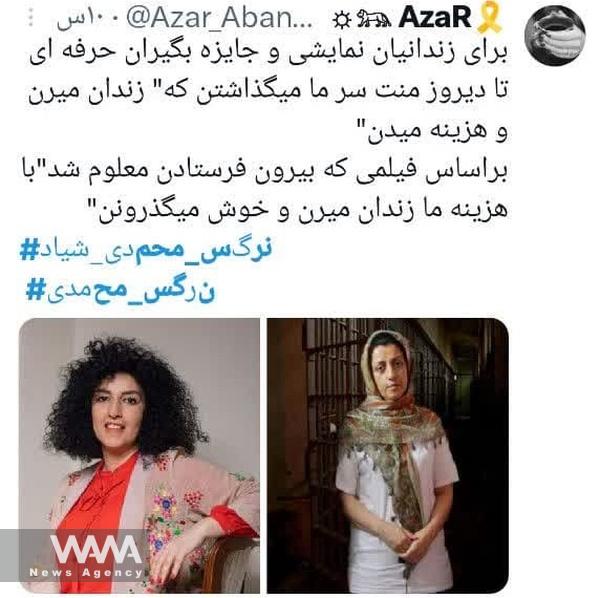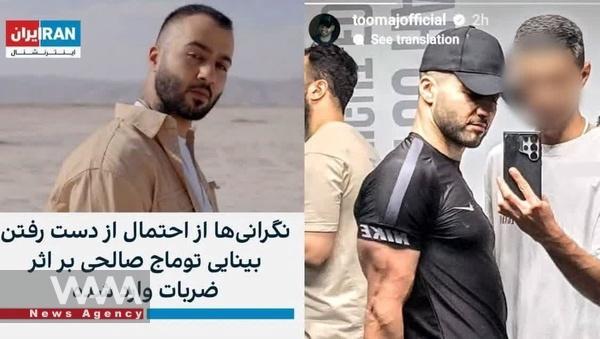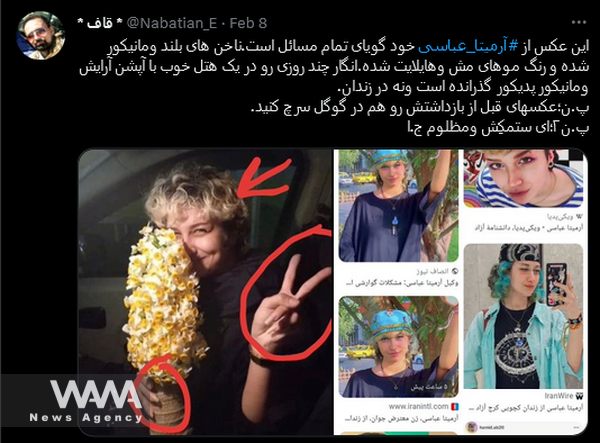Iran Political Prisoners Accused of Extortion with False Claims
WANA (Jan 07) – Every so often, a wave of shocking news about the condition of political and security prisoners in Iran floods international media and social networks. These narratives often start with highly charged tones—stories of horrific torture, mutilation, sexual assault, or mistreatment allegedly taking place in the prisons of the Islamic Republic. However, what often follows these scenarios grabs even more attention: glaring inconsistencies in these accounts and the revelation of contradictory truths.
These stories typically begin with sorrowful imagery, trembling voices, or shocking reports from Iran’s prisons, quickly turning into the headline focus of media outlets critical of the Islamic Republic.

Hossein Ronaghi, after his release from prison, standing on both his feet, despite reports that both his legs were broken and even amputated in prison / WANA News Agency
Famous cases like the claim about Hossein Ronaghi’s leg amputation are still fresh in people’s minds. Ronaghi, a prominent political activist, became the center of a media controversy when it was alleged that both his legs had been broken. The portrayal of his story evoked widespread sympathy. However, it didn’t take long for subsequent videos to show Ronaghi walking out of prison without issue, standing upright, walking normally, and resuming his daily life. What was initially marketed by media as a symbol of a “wronged victim” soon turned into a question of the credibility of such claims.
The case of Narges Mohammadi is one of the most prominent and recent examples of these media games. As the winner of the 2023 Nobel Peace Prize, she was portrayed as a symbol of Iranian women’s struggle against restrictions, naturally becoming a focal point for opponents of the Islamic Republic. For years, grim narratives about Mohammadi’s “dire” physical and mental condition in prison have circulated. Yet, unofficial pictures and reports often reveal a different reality.

A post on the social media platform X about Narges Mohammadi, an Iranian political prisoner, criticizing her behavior and videos that have been released, calling her a “performative prisoner.” / WANA News Agency
When a video was released by one of her cellmates, it added a new dimension to her story: Narges Mohammadi was seen celebrating joyfully in a group gathering in prison, brimming with energy, jumping and dancing. Yet, this was not the end of the story. Following this celebration, she was seen leaving prison on a stretcher, reviving narratives of her “deteriorating physical condition.” Her appearance—with manicured nails, carefully applied makeup, and stylish clothing—bore no resemblance to the dark depictions of torture and suffering spread by foreign media. Videos even suggested her physical condition was better than before her imprisonment.
These images became the subject of mockery on social media, with users joking, “She looks like she just left a beauty salon, not a prison!” They viewed these images as evidence against the validity of such claims.
Iranian #Rapper Toomaj Salehi Released from #Prison
The Public Relations Office of Isfahan’s Judiciary announced: #Toomaj_Salehi has been released after serving his sentence.
Salehi, who was sentenced to one year in prison for charges related to “propaganda against the… pic.twitter.com/iKCAFSJH2l
— WANA News Agency (@WANAIran) December 1, 2024
Stories of hunger strikes by prisoners have also been a staple of such narratives. But when clear evidence emerges, reality appears somewhat different. For instance, it was claimed that an Iranian rapper named Toomaj had grown extremely weak and nearly blind due to a hunger strike in prison.
However, the first photo released after his release showed him in a strikingly athletic pose, with muscles that clearly reflected proper nutrition and exercise during his imprisonment.

Tomaj Salehi after his release from prison, appearing muscular and athletic, despite reports that he was held in poor conditions in prison and might lose his eyesight / WANA News Agency
One tragedy that evoked widespread sympathy in foreign media revolved around a girl named Armita Abbasi. It was claimed that she had been raped in prison and her head had been shaved. This story, filled with emotional details, painted a harrowing image of Iran’s prisons for many audiences. However, a photo she shared after her release turned the narrative on its head: a girl with long hair, manicured nails, and a cheerful face. This immediately raised doubts about the credibility of earlier claims.
These contradictions have even begun to frustrate critics of the Islamic Republic. Some opposition activists and journalists have expressed dissatisfaction with the inconsistencies in these stories, warning about the counterproductive effects such fabricated narratives may have on their audience.

Criticism of Armita Abbasi’s appearance after her release, who is an Iranian political prisoner said to have been held in poor conditions in prison, with her hair reportedly shaved off / WANA News Agency
While these narratives may initially maintain their emotional appeal, they ultimately give way to doubt and ambiguity due to their inherent contradictions.
The reality is perhaps neither as dark as opposition media would have us believe, nor as pure as defenders of the regime portray. But one undeniable truth remains: the deep inconsistencies and glaring gaps in the claims and narratives presented by the critics of Iran’s government.
It is clear that amidst these competing perspectives, contradictions are screaming for attention, leaving the general public as mere pawns in a complex political and media game.













